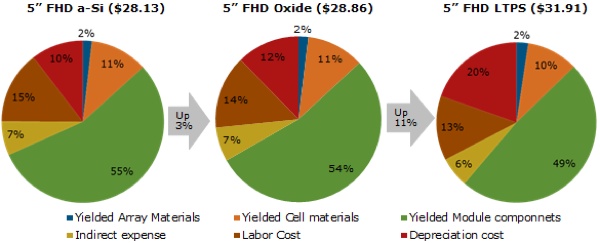As 5-inch full-high-definition (FHD, 1920 × 1080 resolution) smartphone panels continue to gain traction and demand increases, manufacturers are beginning to implement new technologies to reduce power consumption at higher resolutions, according to NPD DisplaySearch (www.displaysearch.com). More than 100 million 5-inch FHD smartphone panels will be shipped in 2013, 5% of all smartphone displays.
There are several manufacturing technologies that can produce the active matrix TFT backplane for 5-inch FHD smartphone panels: traditional a-Si TFT, oxide TFT, and low temperature polysilicon (LTPS) TFT, all of which are used with LCD. LTPS TFT can also be used as a backplane for AMOLED (active matrix OLED) displays.
“While Apple iPhone suppliers are focused on the production of LTPS LCDs, others with experience in oxide TFT are trying to address the issue and gain a competitive advantage,” said Yoonsung Chung, director of large-area displays and FPD materials forNPD DisplaySearch. “Each of these technologies has its own advantages and disadvantages, and it will be critical for panel makers to choose the appropriate technology to reach their goals.”
The vast majority of smartphone LCD screens are now produced with a-Si TFT displays, due to its maturity and relatively low cost, despite the fact that it has lower performance than oxide or LTPS TFT. According to the latest NPD DisplaySearch report, the manufacturing cost gap between a-Si and oxide screens is approximately 3% and another 11% between oxide and LTPS TFT. As display performance continues to increase, however, the need for higher performance backplanes has grown, especially for high-resolution smartphone displays.
“Oxide TFT offers the potential to both lower cost and increase performance,” says Chung. “The cost of oxide displays is comparable to a-Si displays, while the performance of oxide is closer to LTPS. However, instability, poor yield rate, and other technology hurdles could slow its adoption.”

